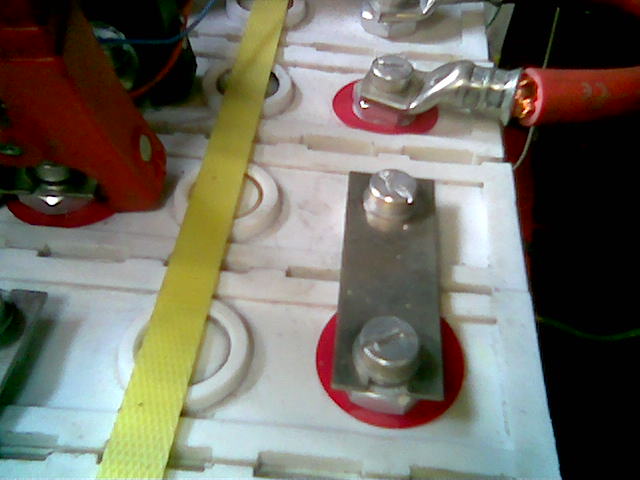Li-ion cell interconnects and Noalox
Posted: Wed Jul 30, 2008 7:26 pm
I have my new Li-ion cells and am not happy with the supplied interconnects.

Problem is that after a drive some are warm while others are not. Also the slot head aluminium screws are not very good. I have got a quote for making up some interconnects from flat copper braid which is a start.
I am thinking that it would be better to replace the screws with studs, but which material, copper, brass, stainless steel? Any suggestions? Suppliers?
I have also found Noalox highly recommended on american EV sites for aluminum connections to prevent corrosion. So far I have only been able to find a supplier who will sell me a case. I might go that route if anyone is also interested in using this product, I could then sell some to anyone who wants some.
http://www.idealindustries.com/products/wire_installation/accessories/noalox.jsp
Or alternatively could someone point me to a U.K. suppler of Noalox or similar product
Thanks,
Greg

Problem is that after a drive some are warm while others are not. Also the slot head aluminium screws are not very good. I have got a quote for making up some interconnects from flat copper braid which is a start.
I am thinking that it would be better to replace the screws with studs, but which material, copper, brass, stainless steel? Any suggestions? Suppliers?
I have also found Noalox highly recommended on american EV sites for aluminum connections to prevent corrosion. So far I have only been able to find a supplier who will sell me a case. I might go that route if anyone is also interested in using this product, I could then sell some to anyone who wants some.
http://www.idealindustries.com/products/wire_installation/accessories/noalox.jsp
Or alternatively could someone point me to a U.K. suppler of Noalox or similar product
Thanks,
Greg